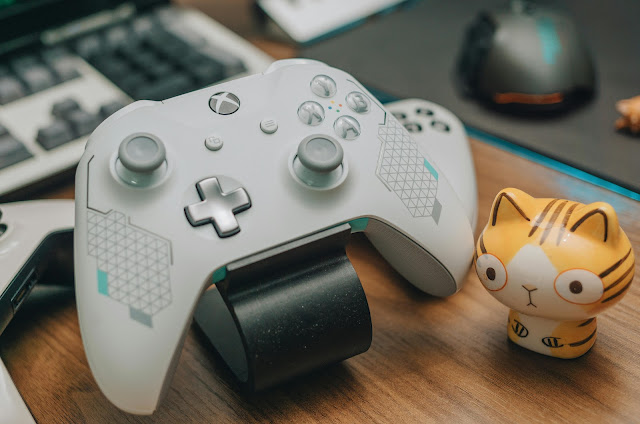How Wearable Tech is Revolutionizing the Way We Train
Wearable fitness devices
Wearable technology has become increasingly popular in recent years, with devices such as smartwatches and fitness trackers revolutionizing the way we train. These wearable devices offer a variety of features that can enhance our workouts and help us achieve our fitness goals. Whether you're a professional athlete or simply someone looking to improve their fitness level, wearable tech can provide valuable insights and data to optimize your training routine.
One of the most popular types of wearable fitness devices is the fitness tracker. These sleek devices, worn on the wrist like a watch, are equipped with sensors that track various metrics such as heart rate, steps taken, calories burned, and even sleep patterns. With this data at your fingertips, you can gain a deeper understanding of your overall health and fitness and make more informed decisions about your training.
Another type of wearable fitness device is the smartwatch. Smartwatches not only track your fitness metrics but also offer a wide range of features such as GPS navigation, music playback, and even the ability to answer calls and messages. This all-in-one device allows you to stay connected and motivated during your workouts without the need to carry multiple devices.
Wearable fitness devices are not limited to just the wrist. There are also fitness trackers designed to be worn on other parts of the body, such as the chest or ankle. These specialized trackers can provide even more detailed data, such as running dynamics or swimming stroke analysis, which can be invaluable for athletes looking to improve their performance in specific sports.
Wearable tech for athletes
Athletes of all levels can benefit greatly from wearable tech. Whether you're a professional athlete training for a competition or a recreational athlete looking to improve your performance, wearable devices can provide insights and metrics that were previously unavailable.
For endurance athletes such as runners or cyclists, wearable tech can track and analyze key metrics such as heart rate, pace, and distance covered. This information can help athletes monitor their progress, set goals, and make adjustments to their training plans to maximize performance.
Strength and power athletes, such as weightlifters, can also benefit from wearable tech. Devices like smartwatches or fitness trackers can track metrics such as reps, sets, and intensity, allowing athletes to monitor their progress and make adjustments to their training routines for optimal results.
Wearable tech is not just limited to track and field sports. It can also be used in team sports such as soccer or basketball. For example, smart clothing equipped with sensors can track an athlete's movements on the field or court, providing valuable data on speed, agility, and even impact forces. Coaches and trainers can use this data to tailor individualized training programs and minimize the risk of injuries.
Training advancements with wearables
The integration of wearable tech into training routines has led to significant advancements in the way we train. Here are some of the ways wearable tech is revolutionizing the training landscape:
Personalized training plans: With wearable fitness devices, trainers and coaches can gather detailed information about an athlete's performance and physiological responses to training. This data can be used to create personalized training plans tailored to an individual's specific goals and needs.
Real-time feedback: Wearable devices provide real-time feedback during workouts, allowing athletes to make immediate adjustments to their technique or intensity. This instant feedback can help athletes optimize their performance and prevent injuries.
Motivation and accountability: Wearable tech can provide motivation and accountability by setting goals, tracking progress, and celebrating achievements. Many devices offer features such as virtual rewards or social sharing, which can enhance the overall training experience and keep athletes motivated.
Recovery monitoring: Wearable tech can also monitor an athlete's recovery, providing insights into factors such as sleep quality and heart rate variability. By tracking these metrics, athletes can optimize their recovery strategies and reduce the risk of overtraining.
Competition analysis: Wearable devices can be used to analyze an athlete's performance during competitions or games. For example, sensors embedded in sports equipment or clothing can track metrics such as speed, power, and technique, offering valuable insights for post-competition analysis and improvement.
Injury prevention: By tracking an athlete's movements and forces exerted during training, wearable tech can help identify potential injury risks and provide recommendations to minimize those risks. This proactive approach to injury prevention can significantly improve an athlete's long-term performance and well-being.
Integration with other technologies: Wearable tech can be integrated with other technologies, such as virtual reality or augmented reality, to create immersive training experiences. This integration allows athletes to simulate real-life scenarios and enhance their skills in a controlled environment.
In conclusion, wearable tech has revolutionized the way we train by providing valuable insights, data, and real-time feedback. Whether you're a professional athlete or someone who simply wants to improve their fitness level, wearable fitness devices can enhance your training routine and help you achieve your goals. With advancements in technology, we can expect even more exciting developments in the field of wearable tech in the years to come.






